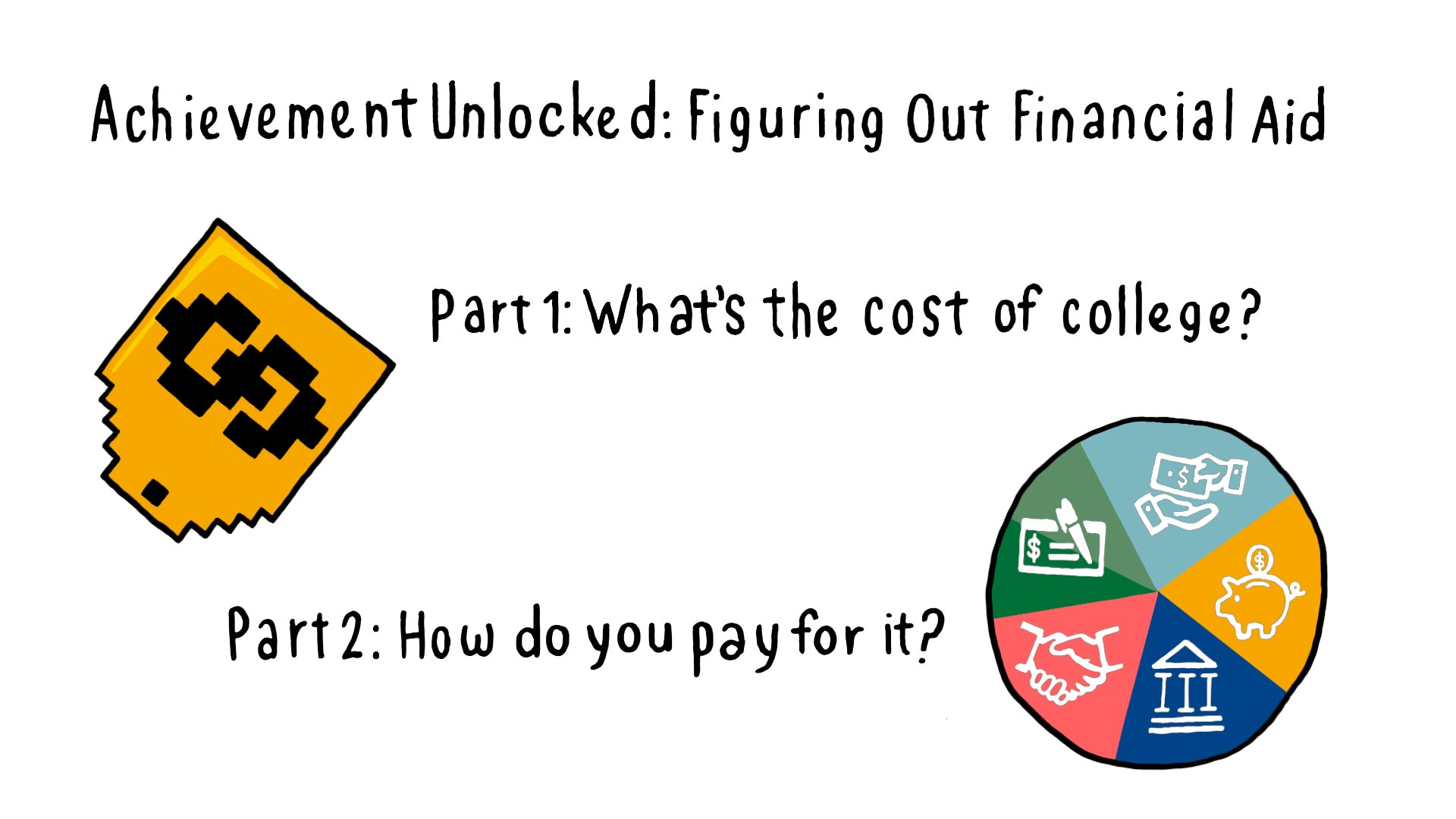Figuring Out Financial Aid
Updated November 2025 to reflect the latest financial aid information.
What's the real cost of college, and how do you pay for it? Follow along as Sofia, a high school student with dreams of being a computer scientist, figures it out by collecting financial aid resources to build her world.
Part I: What's the Real Cost of College?
Before knowing how to pay for college, you should know its actual cost. The real costs to attend aren’t the same as the published tuition and fee amounts. Sofia needs to add up all of her expected college costs, and then scholarships and grants can lower that price to a net cost.
Use a Net Price Calculator
Sofia uses JWU’s Net Price Calculator, which calculates a total cost of attendance based on what Sofia’s looking for.

She’s super excited about living on JWU's Providence Campus, so she knows she’ll need a room plan and also a meal plan. Housing and meal plans can vary, so Sofia needs to look at all the options available and figure out what works best for her.
Part II: How Do You Pay for It?
Financial Aid
Scholarships and grants are both funds you may obtain for college that you don’t have to pay back. Scholarships, whether from JWU or from third parties, tend to be based on academic merit, while grants are based on financial need.
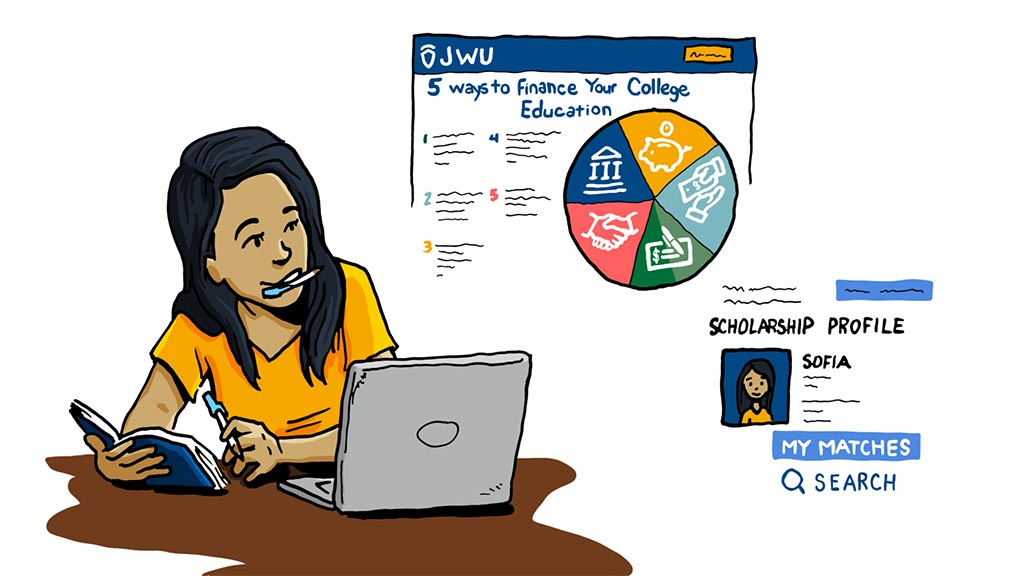
Merit aid usually makes up the largest portion of aid received by students, and JWU rewards amazing students like Sofia with merit aid for academic and personal achievement. Sofia’s merit aid amount would be included in her JWU Offer Letter to help her afford her degree.
File Your FAFSA
Filing the Free Application for Federal Student Aid (FAFSA) is key. By filling out her FAFSA, Sofia can apply for federal, state and institutional funding at the same time – a “one-stop shop.”
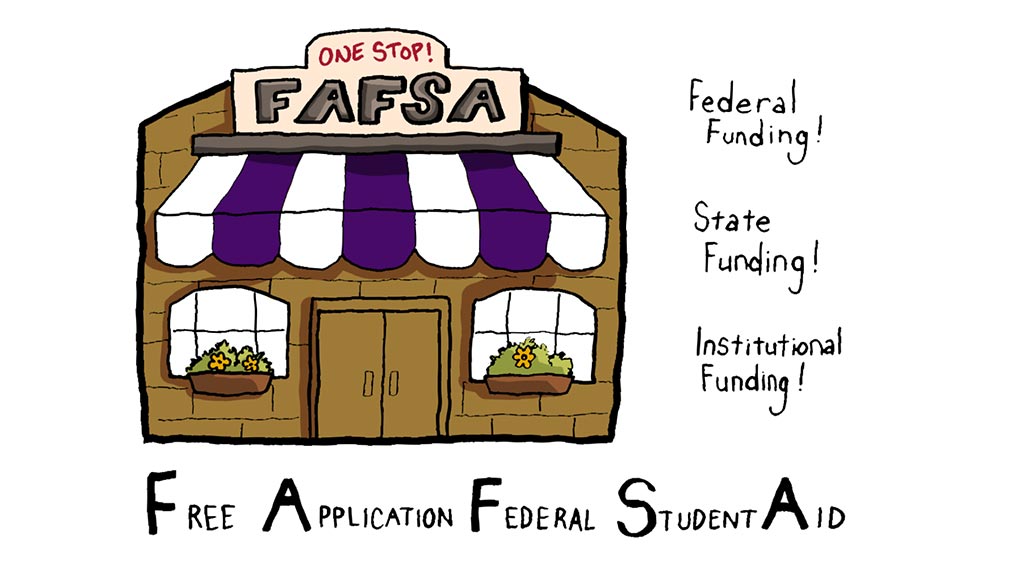
Filling out her FAFSA early gives Sofia a good idea of her funds early in the process. The application is free and only takes her and her mom 30 minutes. Plus, it’s the ONLY way to determine if she’s eligible for federal and state financial aid. There are YouTube tutorials to coach students and parents through the process, and Sofia’s personal JWU financial planner is there to help with any questions, too.
Her FAFSA can also help determine if she is eligible for The JWU Pledge, an initiative that is focused on families with a household income below $200,000. It offers eligible families (from all U.S. states and territories) grant and scholarship packages covering up to 100% of tuition.
Later, when Sofia logs into JWU’s admissions portal to view her Offer Letter, all of the financial details are there, including her eligibility for scholarships, grants, federal aid and loans. Sofia will do her own research on additional scholarships, but the list on JWU’s website is impressive. There’s even a tool that helps accepted students match their profile with outside scholarships to find opportunities they qualify for.
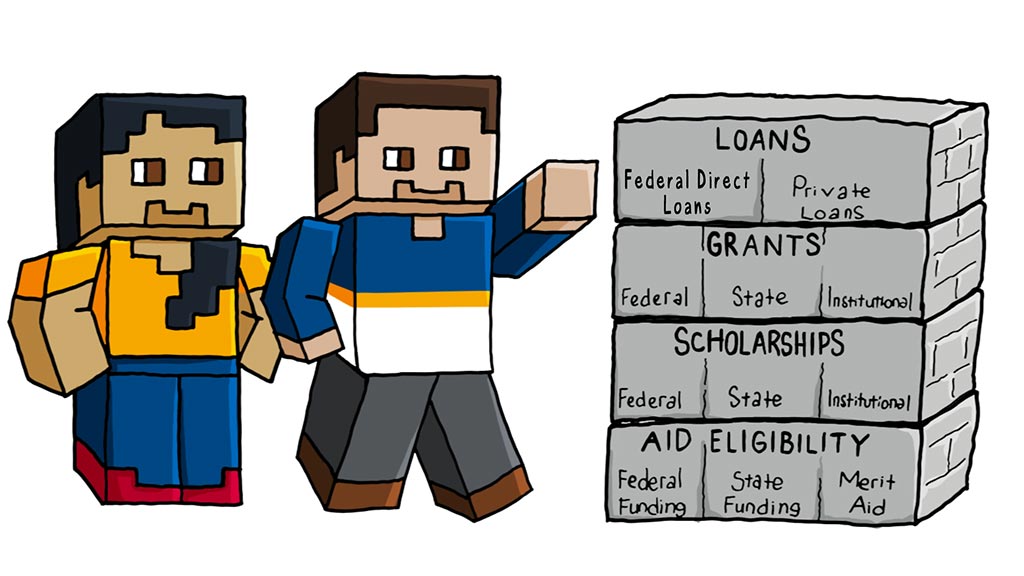
Compare Offers
Sofia compares her second and third college choices with her JWU Offer Letter. Her second choice college may have a higher scholarship offer, but that school’s tuition and fees could cost more than JWU’s, meaning Sofia and her mom would need to take out and pay back higher loans to afford it. Her third choice college has a lower tuition than JWU, but they also offered less scholarship aid.
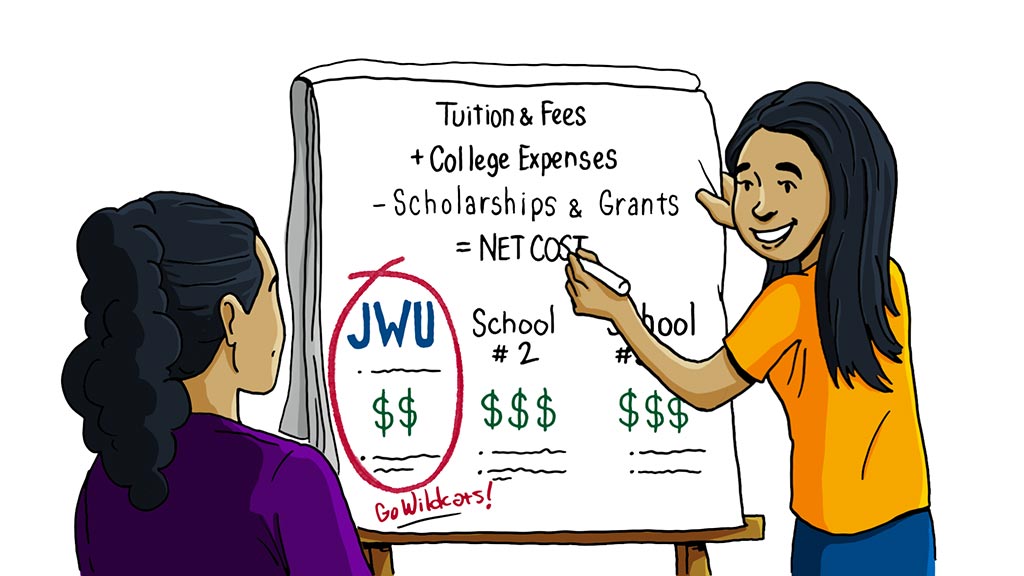
The big picture is more than one number when it comes to financing your education, so be sure to compare all offers carefully!
Family Contributions
Nearly half of the cost of U.S. college educations are funded by parent income and parent savings, while another 2% of the cost is funded by other family members. Many students have a 529 account to which they or their families have contributed funds toward their education, waiting for the day you get your acceptance letter.
Sofia’s mom had opened a CollegeBound 529 account when Sofia was born, hoping she’d have the opportunity to attend college someday, and that will help lower her daughter's net cost of college, bringing her dream into reach.

Personal Savings
Sofia has saved money in the bank — all of which can help her pay for college. Your own savings are a great investment toward your future — so keep adding to that piggy bank and exploring scholarship and grant opportunities!
Loans
Students may obtain low-interest federal loans that can be repaid over a number of years and may also obtain private loans from lenders such as banks and credit unions. Families can also take out loans. Sofia’s mom was approved for a Parent PLUS loan, which lowers Sofia’s college net cost even more!
Working While in College
Federal Work-Study provides part-time jobs for students with financial need, allowing them to earn money to help pay education expenses, while part-time student employment opportunities abound to help JWU students earn money. Sofia is thrilled to score a work-study job monitoring the computer lab she loves hanging out in anyway – so she can even have money for extra fun!
With a little help and by checking in with her financial planner every year, Sofia financed her degree and started building the world she imagined. When she graduated, her family cheered so loudly!

For more information on how to finance your education, visit JWU’s Paying for College website.
